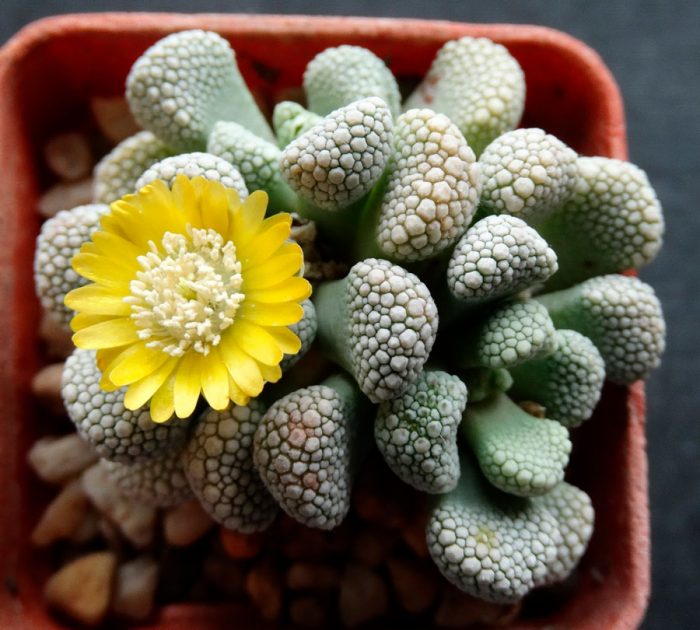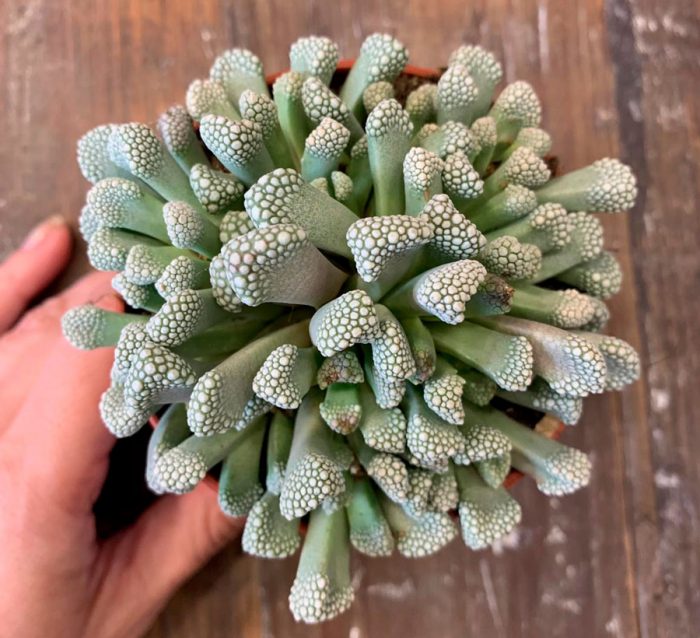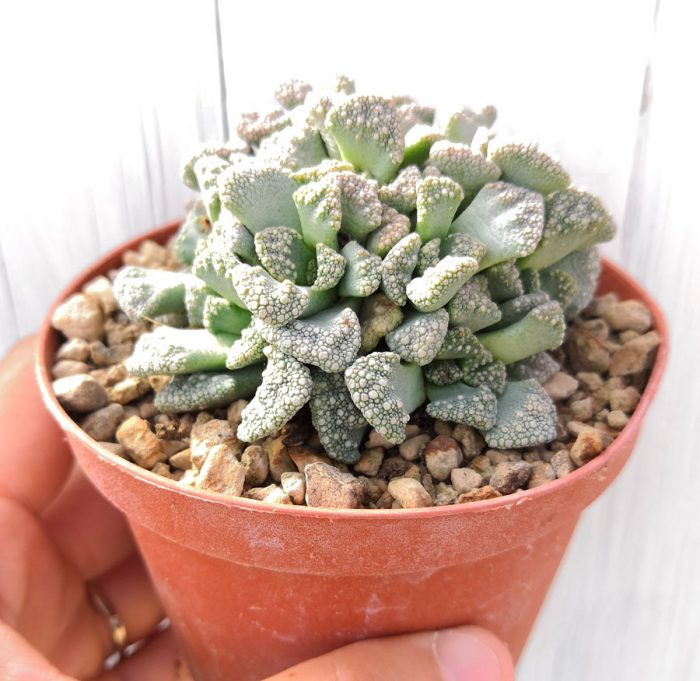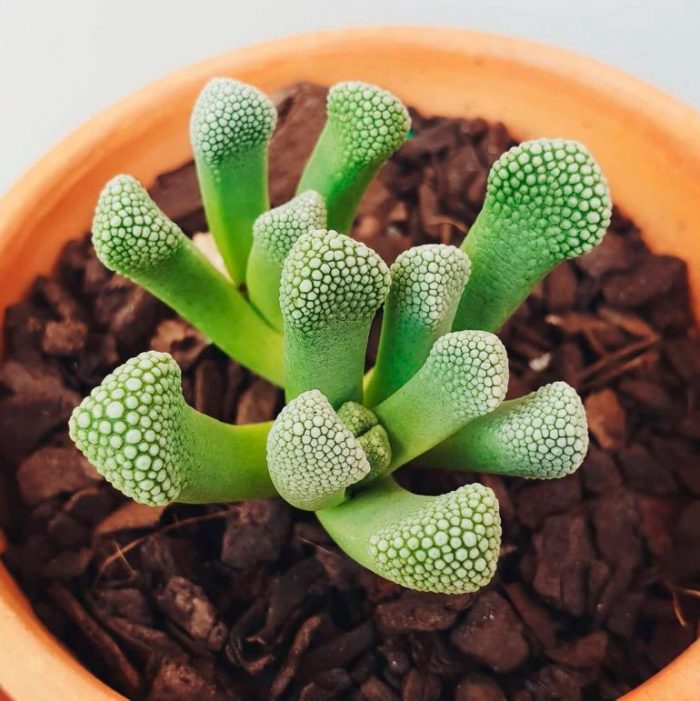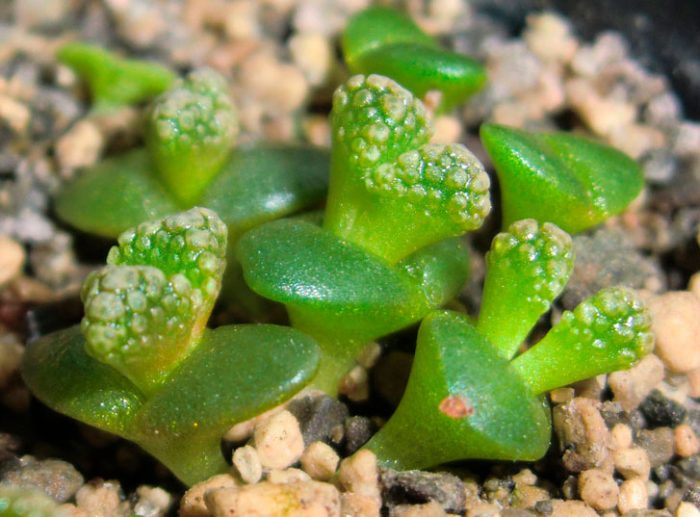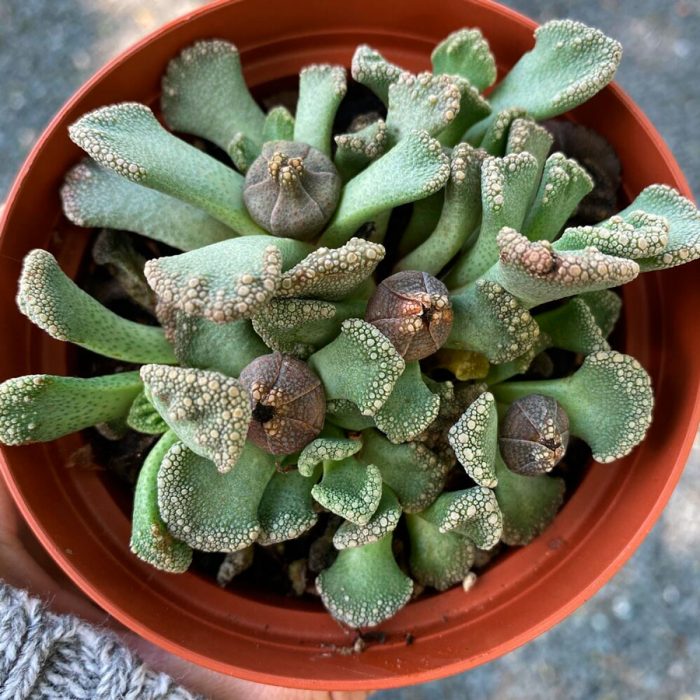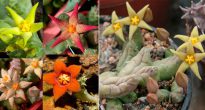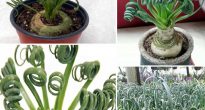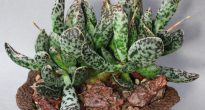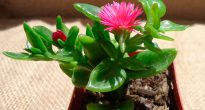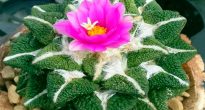The perennial succulent plant Titanopsis is part of the Aizoon family. Under natural conditions, it can be found in the deserts of Africa, where conditions for growth are rather harsh. This plant stands out in that it is able to perfectly camouflage itself as fragments of limestone. Titanopsis comes from Namibia, as well as other countries belonging to South West Africa.
In such a succulent, the foliage looks very similar to stones: it is rather fleshy and thick, and along the edge it has wart-shaped growths. The leaves have a bluish-green color, while the warts on their surface are of various shades: yellowish, red, bluish-silver, etc.
During flowering, single small flowers appear on the bush, which are shaped like a chamomile. Their petals are thin orange or lemon-yellow.
Titanopsis is a slow-growing perennial. It is distinguished by its high vitality, endurance and undemanding care. Flowering begins in the last days of August and ends in mid-October.
Content
Brief description of cultivation
- Temperature... In the warm season, the plant thrives in both hot and cool places. And during the winter months, it should be grown in a room with a temperature of 10 to 12 degrees.
- Air humidity... In the spring and summer, it should be lowered, and in winter titanopsis needs the most dry air.
- Illumination... In the summer, the bush needs intense bright lighting. In the winter-spring period, the illumination should be moderate, while the light needs diffused. Protect from direct sunlight.
- Watering... In the warm season, the substrate is moistened moderately and rarely, only after it has completely dried. In winter, watering is not carried out.
- Soil mixture... It should be loose and very light. You can use ready-made potting soil for succulent plants. And you can take a substrate from sand, leafy soil and absolutely any drainage material.
- Fertilizer... Do not feed.
- Transfer... Only if necessary, while the frequency of transplants should not be more than 1 time in 2 or 3 years.
- Reproduction... Seed method or division of an adult bush.
- Diseases... Reacts negatively to abundant watering, especially when grown in a cool way. This can cause root rot to develop.
Titanopsis care at home
Bloom
As a rule, indoor titanopsis begins to bloom in the last summer weeks. Red or yellowish-lemon small chamomile-shaped flowers grow from the central part of the rosette. Their life span is short. The flowers die off just a few days after they open.
Temperature
This plant is distinguished by its hardiness. During intensive growth, it feels great at both 18 degrees and 40 degrees.
Please note that in winter titanopsis must be kept in a cold place (from 10 to 12 degrees).
Air humidity
In order for the succulent to grow and develop well, the humidity in the room should be as low as possible. It is strictly forbidden to humidify indoor titanopsis from a sprayer.
Illumination
During the growing season, the bush should be in the most illuminated place, while it needs a long day of light. The best place to grow such a succulent plant would be a southeastern or southern windowsill.
In the winter months, the bush also needs a lot of bright light. However, at this time it should be scattered, because due to direct rays of the sun, burns may remain on the surface of the foliage.
Watering
In spring and summer, it is necessary to moisten the soil mixture in a pot rarely and in moderation. Make sure that the clod of earth in the pot has time to dry completely before the next watering. If there is a prolonged cloudy weather, then watering should be extremely poor, despite the fact that because of this, the buds can fly around the bush. The fact is that excessive moisture can lead to rot on the stems and foliage.
During the dormant period in the winter months, the plant is not watered at all.
Pot selection
The pot for planting titanopsis should be chosen quite wide, since the bush gradually grows in breadth. It should also be deep, because the plant has a well-developed and long root system. Another important condition when choosing a container for planting is the presence of drainage holes at the bottom, which exclude stagnation of moisture in the substrate.
Soil mixture
For growing such a succulent, only a very loose and light earthy mixture is suitable. In specialized stores, ready-made mixtures for succulents are sold. You can also make it yourself by combining sand, leafy soil and drainage material (pumice stone, granite chips, etc.). After transplanting, it is recommended to cover the surface of the potted soil mixture with a thin layer of fine gravel.
Top dressing
Such a succulent does not need systematic fertilization. At the same time, it is still occasionally possible to feed titanopsis: for this, it is watered with a solution of liquid fertilizer for succulent plants of weak concentration.
Titanopsis transplant
The root system of the flower is highly sensitive. She reacts extremely negatively to any external influence. In this regard, the plant is transplanted only when it is definitely necessary. Remember that this procedure cannot be carried out more than once every 2 or 3 years.
Transplanting should be done very carefully in a transshipment manner. Try to keep the clod of earth intact.
Pruning
It is not necessary to prune titanopsis, because during its entire life time it does not form either shoots or stems. All injured foliage must be cut very carefully and in time, as it can cause the development of rot.
Dormant period
Such a succulent plant grown in indoor conditions needs to organize the right conditions in winter. The fact is that in the cold season, the plant has a dormant period.
With the onset of winter, titanopsis is transferred to a rather cold place (the temperature is not higher than 12 degrees). The air in the room must be dry, and the bush also needs a lot of diffused bright light. Protect it from direct sunlight.Watering is not carried out in winter.
Reproduction methods
Growing from seeds
For sowing titanopsis seeds, a light loose substrate is used, which should be slightly moistened. The seeds are lightly pressed into the soil mixture, and they are not covered with anything on top. The container is covered from above with a film or glass, then it is transferred to a bright and warm (about 30 degrees) place. Seedlings should appear several days after sowing.
It will be necessary to open the seedlings only 6 months after their appearance. With the formation of the third pair of true leaf plates, the bushes are planted in separate small pots. The flowering of young plants can only be seen after 2 or 3 years.
Socket division
Titanopsis can be propagated by dividing the outlet. This procedure should be carried out in conjunction with the transplant. Each of the divisions must have at least three fully formed roots. Treat the cut with charcoal. Then the cuttings are slightly dried in the open air and planted in an individual pot.
The soil mixture in a pot with planted bushes is not moistened for 15–20 days. The flowering of young succulents can be observed 1 year after division.
Diseases and pests
Titanopsis is resistant to diseases and pests. However, if the rules of care are violated, it may suffer from root rot. As a rule, stagnation of moisture in the substrate and low air temperature contribute to its development. Pull the roots out of the substrate and cut out any problematic parts down to healthy tissue. Treat the roots with a fungicidal solution. Plant the bush in fresh soil mixture and do not break the watering rules in the future.
Of all the pests, only a spider mite can settle on a succulent. You can get rid of it with a suitable insecticide.
Types of titanopsis with photo

Titanopsis calcarea (Titanopsis calcarea) - this species is most popular with flower growers. The foliage can be colored in various shades from ocher brown to greenish gray. The color of the flowers is lemon yellow.
Even in home culture, species such as:
- Fuller's titanopsis (T. Fulleri). The flowers are dark yellow.
- Titanopsis Hugo-Schlechteri (T.hugo-schlechteri). It blooms with ocher-orange flowers.
- Titanopsis luderite (T.luediritzii). In double flowers, the heart-shaped petals are snow-white, and the outer ones are of a rich yellow hue.


